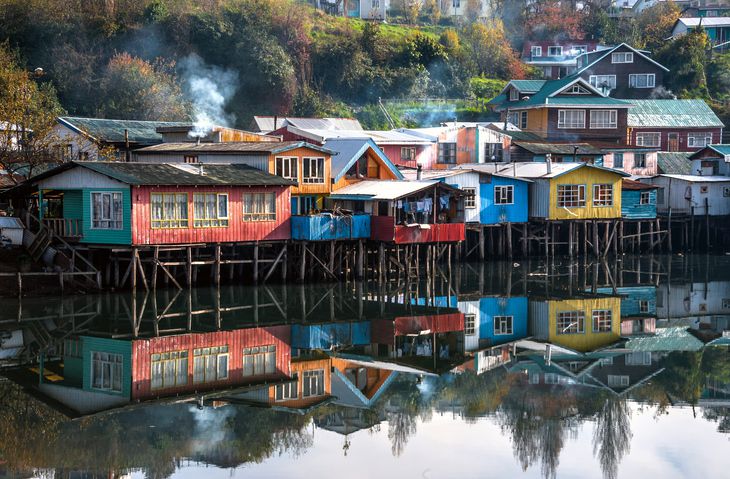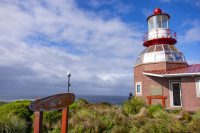When you’re planning a Patagonia vacation, architecture is probably not one of the first ideas that comes to mind. Without the grandeur of its mountains, forests, fjords and waterways, the region wouldn’t have the worldwide reputation it does, but its cities, towns and countryside display a wealth of memorable vernacular constructions.
To see the richness of this architecture, one of the best destinations is the archipelago of Chiloé, accessible from the Patagonian ferry port of Puerto Montt for either daytrippers or overnighters. Resembling Canada’s Vancouver Island, the Isla Grande (“Big Island”) of Chiloé was home to endless stands of alerces, a “redwood of the south” that made a strong, durable and rot-resistant construction material.
In colonial times, Jesuit missionaries proselytized among the archipelago’s native inhabitants and, at the same time, started an architectural tradition of shingled churches that helped make it a UNESCO World Heritage Site. One of the most impressive, in the city of Castro is the San Francisco Church, with its flamboyant banana exterior, twin bell-towers in violet, and reddish trim. That said, there are other equally impressive but more subdued constructions – in the city of Ancud, the Fundación Amigos Iglesias de Chiloé is a museum that provides an overview, with original pieces salvaged from chapels and churches that no longer exist.

Chiloé also has a secular architectural tradition, visible in the diverse design of shingles that covers its house and, especially, in the palafitos (houses on stilts) strung along the shoreline of Castro and elsewhere. Contemporary architects have transformed many of these into stylish small hotels, restaurants and galleries that promise to make a longer stay rewarding.
No comments yet
There are no comments on this post yet.






Leave a comment